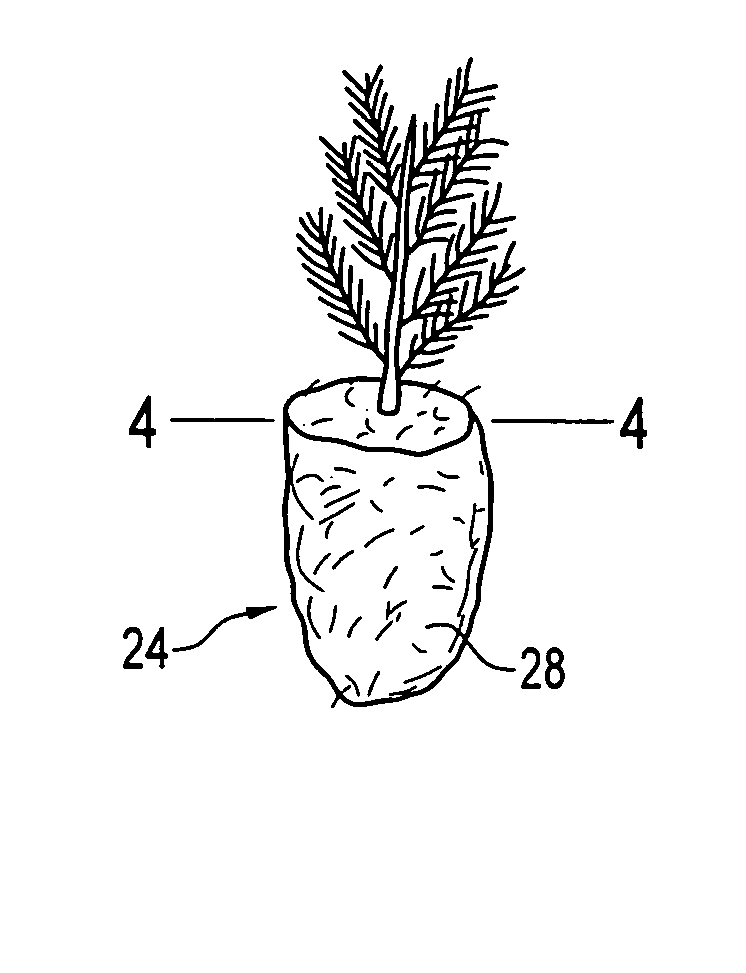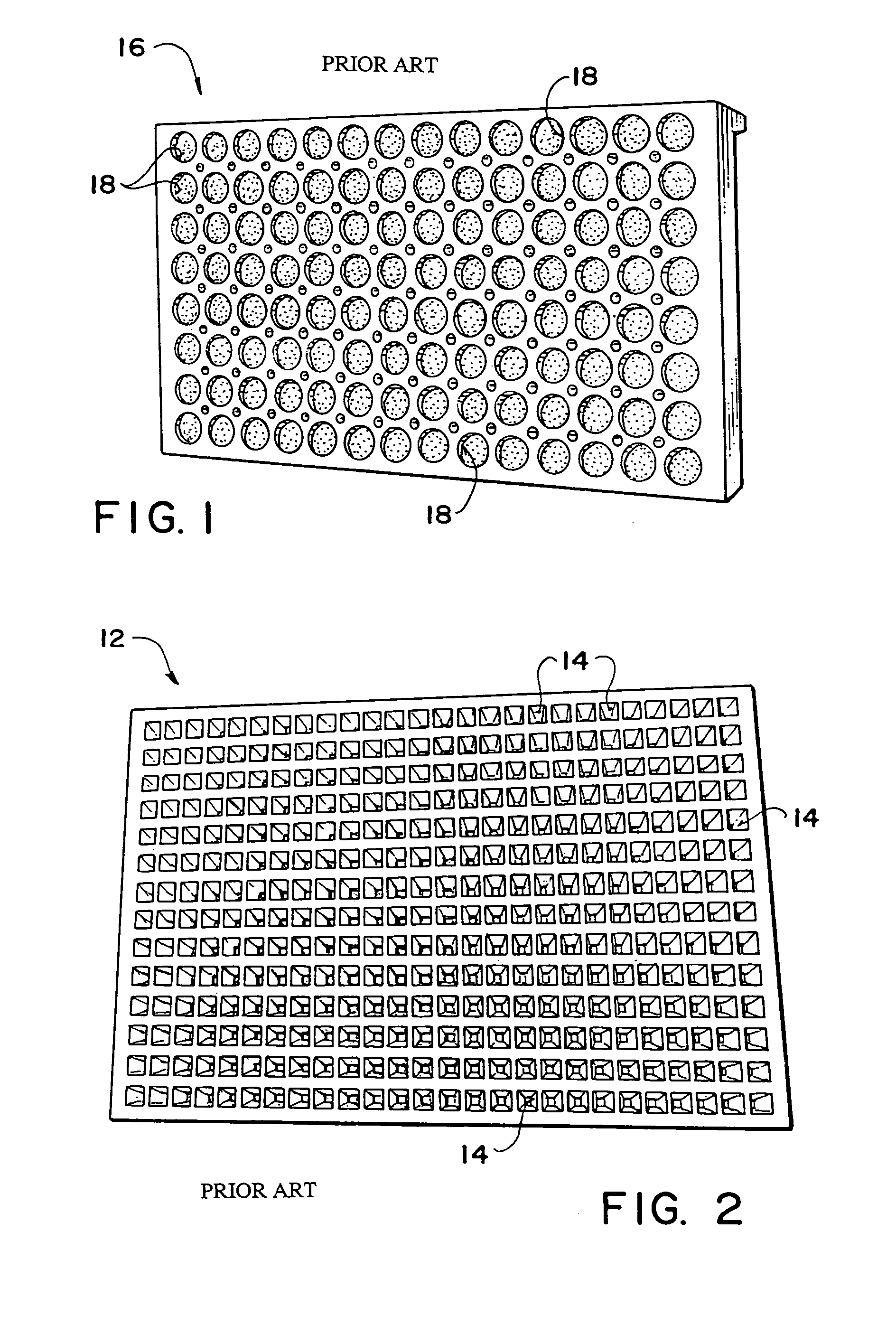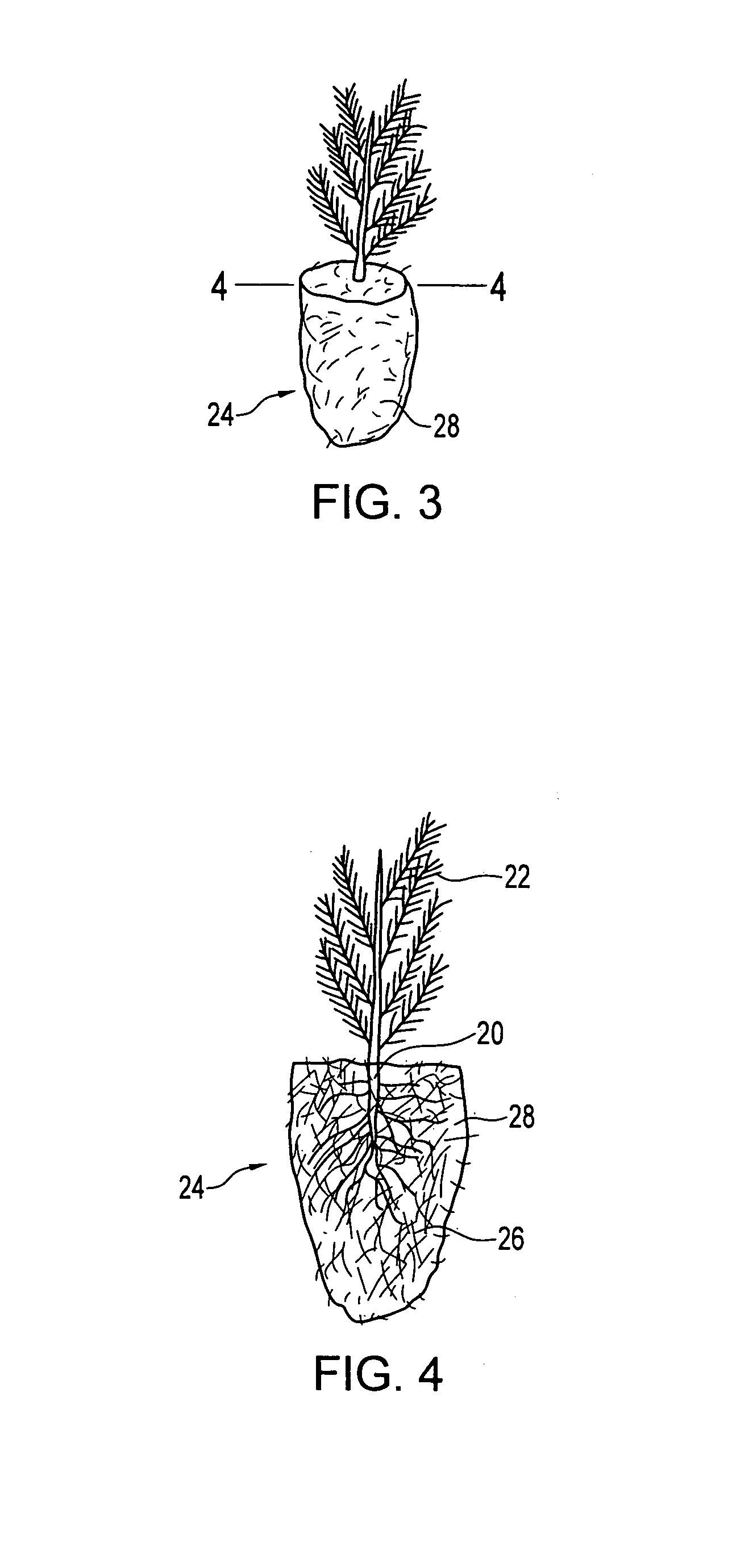Tree seedling plug and method of making same
a plug and seedling technology, applied in the field of plugs for planting tree seedlings, can solve the problems of high failure rate of bare root replanting of tree seedlings, inconvenient use, and insufficient development of root of seedlings in the cavity to retain the growing medium,
- Summary
- Abstract
- Description
- Claims
- Application Information
AI Technical Summary
Benefits of technology
Problems solved by technology
Method used
Image
Examples
Embodiment Construction
a) Transplanted Mini-Plug
[0017]In a first embodiment of the invention, a mini-plug 24 (FIG. 3) is first prepared for subsequent transplanting into a standard styroblock. A mini-tray 12 (FIG. 2) or block made of styrofoam having an array of cylindrical cavities 14, as shown in FIG. 2, is used. Unlike the standard styroblock 16 which has cells 18 having a diameter from 3 cm. to 6 cm. and depth from 10 cm. to 15 cm., the mini-tray 12 has cells 14 having a diameter approximately 1 cm and depth of 3 to 5 cm. Thus a mini-tray 12 as used in this invention has an array of 14 by 26 cylindrical cells or cavities 14, compared to the 8×14 array of cells 18 of a standard styroblock 16. A suitable mini-tray is manufactured by Synprodo of Holland. The cells 14 are filled with a loose growing soil mixture consisting of approximately 95% by weight coconut coir fibre, and 5% by weight of a fine, white, thermal-sensitive fibre substance manufactured and sold by Fibre-Neth Holland BV under the trademar...
PUM
 Login to View More
Login to View More Abstract
Description
Claims
Application Information
 Login to View More
Login to View More - R&D
- Intellectual Property
- Life Sciences
- Materials
- Tech Scout
- Unparalleled Data Quality
- Higher Quality Content
- 60% Fewer Hallucinations
Browse by: Latest US Patents, China's latest patents, Technical Efficacy Thesaurus, Application Domain, Technology Topic, Popular Technical Reports.
© 2025 PatSnap. All rights reserved.Legal|Privacy policy|Modern Slavery Act Transparency Statement|Sitemap|About US| Contact US: help@patsnap.com



